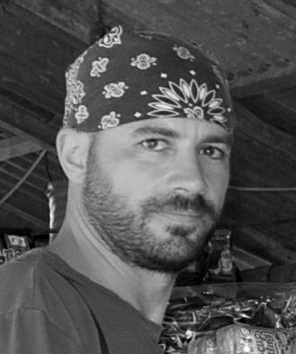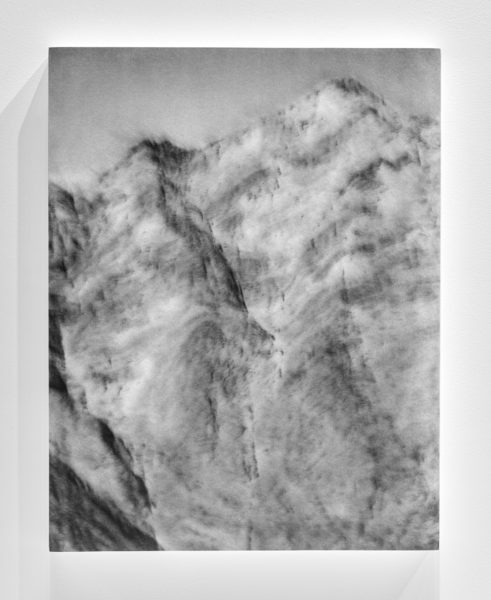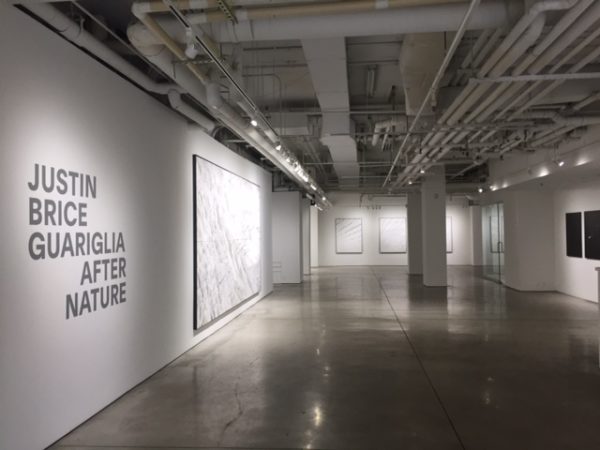
23 May Mountainfilm Gallery Walk: Justin Guariglia at Telluride Gallery
Mountainfilm uses the power of film, art, and the exchange of ideas to inspire audiences to create a better world. Mountainfilm’s online schedule is now live, including times and venues for films, presentations, Moving Mountains Symposium about The New Normal, parties, Town Talks, book signings – don’t miss Sunday’s Reading Frenzy hosted by Telluride’s indie bookstore, Between the Covers – special events, and the 2017 Gallery Walk.
This year’s Gallery Walk is heavy with photography, images by Mountainfilm producer Stash Wislocki of children from war-torn or conflicted countries and Stephen Dupont’s look at wars in Afghanistan and Rwanda, funerals in Sri Lanka, and famine in Angola. Renan Ostuk tells a story in pictures of Nepal’s last honey hunters. A group of photographers examine environmental justice, weather behavior, and island life. Part-time Telluride local Jen Buck offers a pause to refresh with her lyrical images of rolling surf and moonlight.
And, at the Telluride Gallery of Fine Art, trans-disciplinary artist Justin Brice Guariglia creates a series of (uncharacteristically) small, abstract paintings and photographs that expose, at a visceral level, the dire implications of the Anthropocene or the “Age of Man.” His new body of work, to be presented for the first time in Telluride, is derived from his flights over Greenland with NASA on its “Operation Ice Bridge” mission.
Check out Justin’s podcast below for details about his life and work.
Check out the Mountainfilm website for further details about Justin’s talks.
A limited number of Palmyra passes are still available. Buy a Festival pass here now.

Justin Brice Guariglia, artist, polymath
We can draw a straight line from the Industrial Revolution (roughly 1 760 – 1840) – the monumental transition to new manufacturing processes and its sorry corollary, the increased use of fossil fuels and toxic chemicals – to the Anthropocene, a neologism used to describe the “Age of Man,” the subject, in broad strokes, of the work of Justin Brice Guariglia, the featured artist-activist at the newly renovated Telluride Gallery of Fine Art.
Guariglia’s images will be up for Mountainfilm’s Art Walk, which is Friday, May 26, starting at 3:30 p.m. This new body of work, being shown for the first time at Mountain and the Telluride Gallery, will remain up at the venue through June 15.

Writing just after the official end of the Industrial Revolution, in the mid-19th century, Charles Baudelaire, father of modern art criticism, was deeply ambivalent about the trappings of modernity – including the recent innovation of photography – but in his “Mirror of Art,” he expounded upon the idea that art holds up a mirror, both reflects and anticipates, the gestalt of the culture that engenders it.
Justin, a multi-disciplinary, contemporary Brooklyn-based artist and polymath, regularly collaborates with philosophers and scientists – since 2015, he has been working on projects – to understand, then reflect back to his audience, the complexities of our rapidly changing, highly challenged Pale Blue Marble.
Hungry for emotional depth, Justin’s images straddle the crossroads of painting, printmaking, photography, and sculpture to explore mankind’s relationship to ecology. His massive monochrome paintings derived from aerial photography – printer as paintbrush – is the artist’s attempt to weaponize art against human ignorance and indifference. The inspiring, albeit chilling work has roots in hard news. But it really work because it seduces the viewer into witnessing loss firsthand through haunting art, which ultimately is all about preservation, time, space, and scale.
Truth is, Justin’s images are fossils of a dying age. They could easily last longer than the glaciers they depict.

The term “Anthropocene” was coined by an atmospheric scientist named Paul Crutzen at the dawn of the New Millienium to express his intuition that humanity had gotten way ahead of its skis. Our activities were now shaping the state of systems that regulate the conditions of life. Human-induced impact on the world had become so great, we had pushed the planet into a whole new stage on the geological time scale. Bye bye Holocene epoch, (which had endured for 10,000+ years). Hello, the New Normal – but not in the good, Mountainfilm sense of the words. The Anthropocene could well be a point of no return.
Since summer 2012, this oldest glacier in Greenland has retreated more than 10 miles a year, three times faster than in the mid-1990s, according to NASA’s satellite pictures. The amount of ice lost may, in fact, be the largest on record contributing more to sea level rise than any single feature in the Northern Hemisphere.
Justin’s initial photographs are shot from a NASA research plane. Because of this, the bird’s eye view his final work depicts becomes a meta for the arm’s-length, objective observer way many of us consciously or unconsciously deal with global warming and climate change. Justin hopes that his pictures challenge our standard, self-referential experience of the environment, our local and limited perspective, and force us to look into the big ugly face of a global crisis.

Through materials, (acrylic inks and other unique materials), trademarked processes, and scale, all of which informs and shapes his work, Justin Guariglia is doing nothing less than forging new ways for us to see and experience the world around us.
“With the awareness of living in a damaged world, art can no longer rely on the representation or imagination of a world ‘out there,’ of nature as the object of aesthetic reflection. Yet a nature that is no longer natural is in dire need of being brought to our senses, set before our eyes. While the massive environmental crisis of the Anthropocene may be a hyperobject that defies direct representation, it paradoxically calls for the creation of evidence, of perceptibility, of documents – the renderings of a fleeting world. What is needed are bodies of evidence for a transformation that is both so massive and so tiny, that is happening so fast and so slowly, that no image or narrative can ever grasp its breadth. How can we start to sense what we only know abstractly? Producing such bodies of evidence seems like an impossibility – and at the same time, more necessary than ever…,” wrote Eva Horn, professor of cultural theory in the Department of German at the University of Vienna, Austria, in the introduction to a catalog of Justin Guariglia’s work.

Untitled Study. Acrylic on wood panel. ©Justin Brice Guariglia, Courtesy of the Artist. Image from Justin’s new body of work.
Horn continues:
“In the context of the current boom of aerial photography as embodied by superstars like Ed Burtynsky or Andreas Gursky, Guariglia’s work clearly draws on the strategies of aestheticizing a landscape from above. However, he takes these strategies into a new, darker and hence more political direction. Most current aerial photography emphasizes the uncanny beauty of their objects – be it highways in the desert, artificial islands, cityscapes, or oil spills. Guariglia does not stop at the overwhelming representation of a nature transformed by human technology, even in its demonic beauty. Emphasizing the immense scale of the Anthropocene transformation by a distanced yet intimately detailed perspective, his works emphatically highlight the processes of destruction and corrosion…”

To keep driving the point home, Justin even developed an app. One click and “After Ice” makes real the existential threat we all face, one that remains an abstraction to all too many on the planet. (Details here.)
Transforming landscapes into metaphors, spiritual or socio-political, is nothing new. Let’s return to the 1800s. Artists like Albert Bierstadt and Frederic Church went way over the top in their monumental depictions of cathedral-like cliffs and Golden Glow that enveloped a scene. And small wonder: at the time, being a landscape painter had political and moral overtones because the presiding metaphor of the landscape experience was that of God as Supreme Artist.
Today, though we may have corrupted that metaphor, artists like Justin Brice Guarglia remain seers and high priests.
The year 2017 will bring, among others, a solo traveling exhibition of Justin’s work, schedule to debut in early September at the Norton Museum of Art in West Palm Beach, Florida. The show is entitled “Earth Works: Mapping The Anthropocene” and features some of Justin’s greatest hits in which he explores mining, agriculture, plus his regular muses, sheet ice and sea ice.
The gallery space is across the street from Mar-a-Lago.
The irony is not lost on anyone.
More about Justin Brice Guariglia:

Transdisciplinary in nature, Justin Brice Guariglia (b. 1974) is a contemporary visual artist and a Howard Foundation Fellow in Photography at Brown University (2017-2018).
Justin studied Italian art history under the late art historian Terisio Pignatti in Venice before moving to Beijing, China in 1996 to study Chinese language, culture, and history. In 1997, he returned to the U.S. to finish a liberal arts degree at Wake Forest University, before returning to Asia where he lived for 20 years, first as a student, and shortly thereafter, as a documentary photographer.
Justin has traveled widely across the continent of Asia on photographic assignments for the New York Times, Smithsonian, National Geographic, Time, and the Far Eastern Economic Review, working primarily as a visual anthropologist, documenting the rapidly changing cultural and physical landscape of the region.
In addition to the show at the Norton Museum, Justin has had a solo show entitled “After Nature” at TwoThirtyOne Projects, a project space in Chelsea, New York City. Elements of this work appeared in a solo show at Lincoln Center, and a group show at the Jack Shainman Gallery in New York City.

From one of Justin’s New York shows. Image, Charlotte Hacke.
In previous years, the work appeared in group shows at the Minnesota Center of Photography and the Museum Belvedere in the Netherlands.
In 2014, Guariglia was nominated for Hong Kong’s Sovereign Art Prize.
In his earlier career, Justin Guariglia’s documentary work was shown in solo exhibitions at the National Geographic Museum, Utah Valley University, and Otis College of Art and Design, and the Ping Yao Photography Festival, and has published monographs with Chronicle Books and the Aperture Foundation.


Sorry, the comment form is closed at this time.